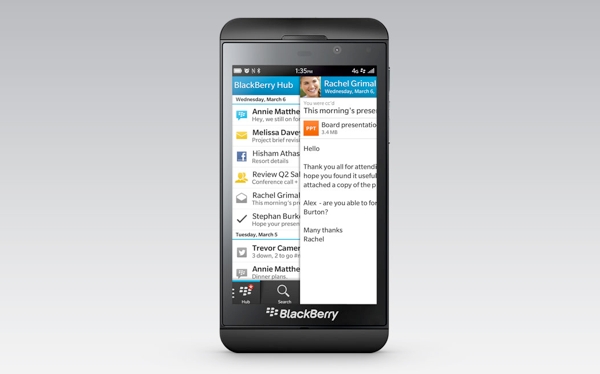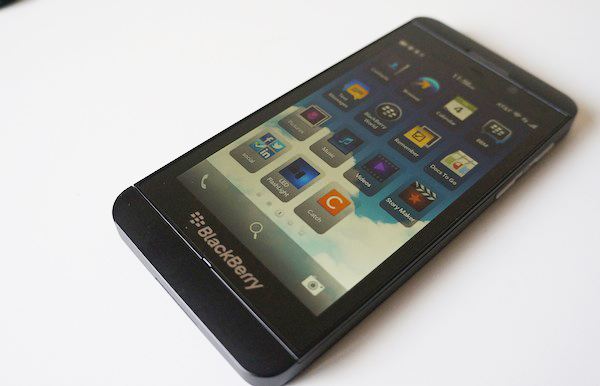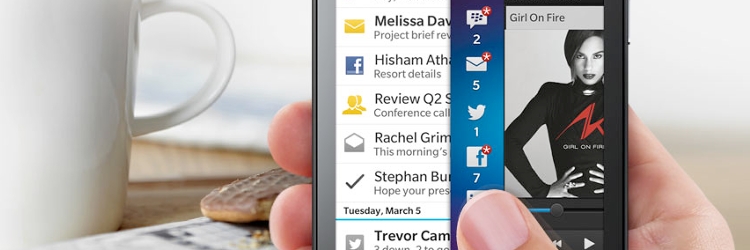
The days of a BlackBerry being the definitive smartphone are gone. The BlackBerry Z10 debuts at a time when smartphones are as much about play as they are productivity, and this phone can thrive in this era only if it can strike a balance between entertainment and enterprise. Can the BlackBerry Z10 be the savior that BlackBerry - the company and operating system - so desperately needs?

Hardware & Design
The BlackBerry Z10 has what many might consider a generic appearance. There are no eye-popping colors like we've seen with Windows Phone 8 devices, nor any bold curves to elicit the cliché labeling of a phone being "sexy." It's an all-business box, rectangular and overwhelmingly black except for the silver-colored buttons that appear in limited areas. That's not to say that being all business is boring; the Z10 just so happens to have a design that favors minimalism. The 130mm x 65.6mm x 9mm (5.11in x 2.58in x 0.35in) frame is basically the "Little Black Dress" of smartphones.

A large bezel and lines along the edges make the BlackBerry Z10 subtly catch the eye, but a user's senses will quickly gravitate to touch. Hard plastic is used for the front and sides of the phone, but a lusciously soft rubber-like material is used for the back of the phone. It has dozens of tiny dimples similar to the Google Nexus 7, and it's definitely one of the most comfortable smartphone materials to rest gently in your palm.
The body is otherwise sparse, as BlackBerry has shed the weight of a physical keyboard and trackball that has been so common for the handset maker. The Z10's only distractions from its otherwise understated build are micro USB and microHDMI ports on the left; a power button and 3.5mm headphone jack on the top; and volume buttons, separated by a button that can pause music playback or be held down to prompt voice commands, on the right. The bottom of the phone houses a speaker that plays music at a decent volume, and there's also a red notification light in the top right corner.
Screen
A 4.2-inch screen serves as the face of the BlackBerry Z10. The display looks excellent thanks to strong brightness, which can be adjusted on a sliding scale, and a 1280 x 768 resolution that densely packs pixels into a smaller space. The high resolution is typically seen on phones with larger screen sizes, so the 356ppi display on the Z10 creates a detailed picture that looks wonderful for videos and text. The brightness levels also translate to a legible screen when viewed outdoors.

Performance & Specs
BlackBerry 10 is an operating system built entirely on the concept of fluidity; users move from one app to the other and change course at an instant. Facilitating that persistent state of movement requires a strong set of internal hardware, and the BlackBerry Z10 fits the bill with a 1.5 GHz dual-core processor and 2GB of RAM. The processor keeps the Flow and Peak elements of the BB10 software moving freely, and the phone seems to buzz along with only a few hiccups.
Key BlackBerry Z10 Specs:
- 16GB internal storage, microSD slot up to 32GB
- 4.2-inch IPS display (1280x768 resolution, 356ppi)
- 1.5GHz dual-core processor
- Bluetooth 4.0, NFC, Wi-Fi 802.11 a/b/g/n, microHDMI-out
- 4G LTE and HSPA+
- 1,800 mAh battery
One nagging feature is that when launching an app, the phone first navigates to the Active screen and then launches the app. The act adds only a fraction of a second to the process, but the presentation makes it seem as though the phone is slower than necessary. The same appearance of sluggishness happens when switching between portrait and landscape orientation, which is odd considering that every other aspect of the BlackBerry Z10 navigation appears to be quite fast. BlackBerry 10, at least on the Z10, appears to have excellent memory management and the hardware to effectively run the operating system with practically no drag.
